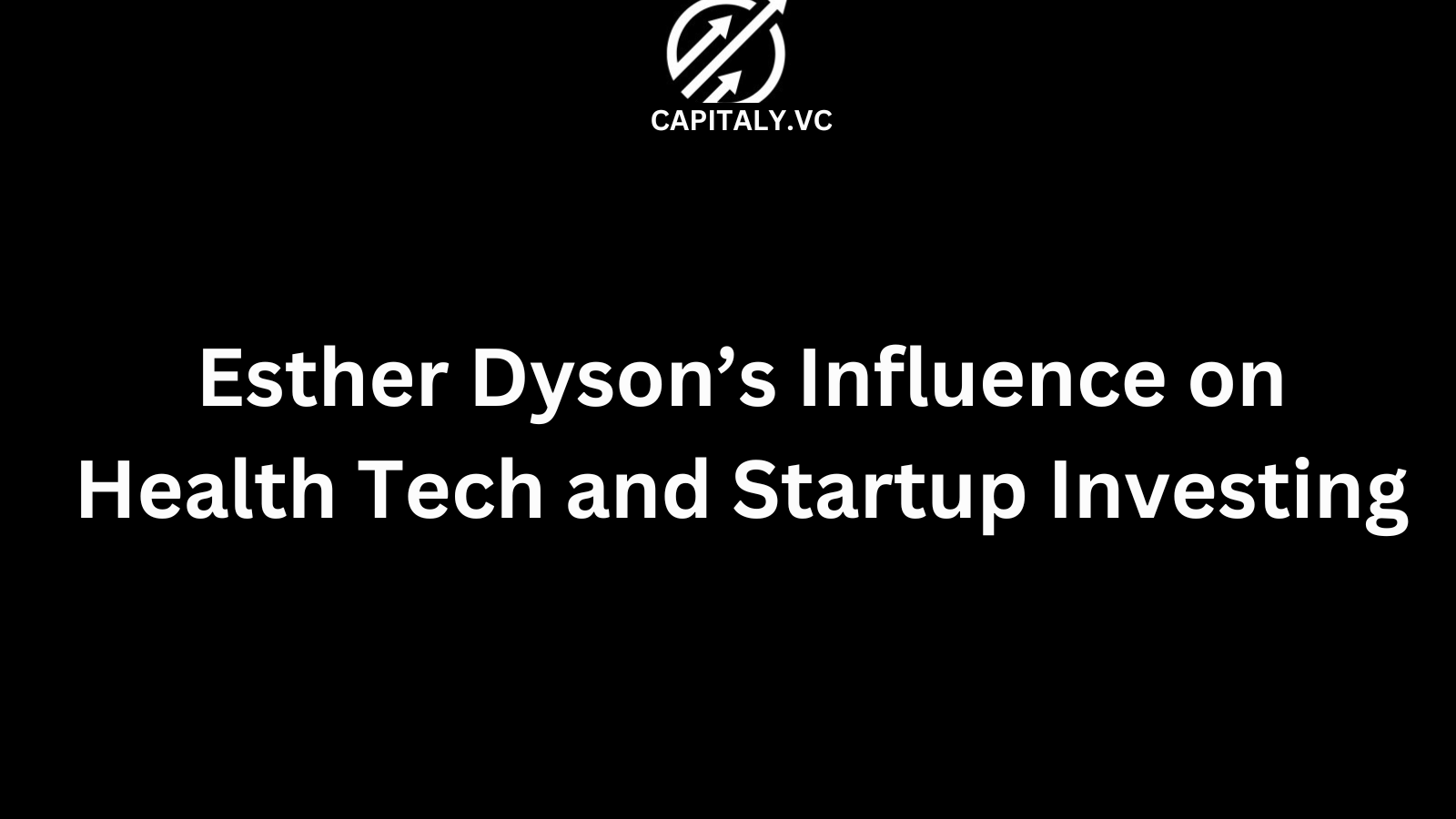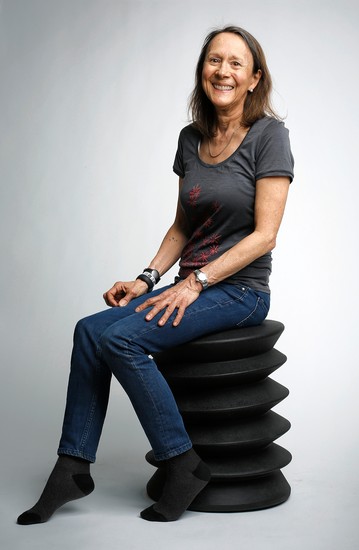Esther Dyson’s Influence on Health Tech and Startup Investing
Esther Dyson’s Influence on Health Tech and Startup Investing

Esther Dyson’s influence on health tech and startup investing goes beyond funding companies. She invests in systemic change—where health outcomes matter more than headlines.
This blog explores how founders can learn from Dyson’s style, values, and startup criteria to attract better funding and build more meaningful companies.

Who is Esther Dyson?
Esther Dyson started as a journalist, became a venture capitalist, and now stands as a leading thinker in health tech innovation.
She backed companies like 23andMe and Evernote early. But more than picking winners, she advocates for founders who want to fix broken systems.
Esther Dyson’s Role in Health and Tech Investing
She shifted her focus from traditional tech to preventive health and behavioral change models.
Her initiative, Way to Wellville, is a 10-year experiment in improving community health outcomes—without relying solely on new apps or wearables.
For other trend-breaking investors, check out our post on Peter Thiel’s Investor Highlight and Strategy.
The Importance of Social Impact in Dyson’s Work
What sets Dyson apart?
She invests in change, not just returns.
Her portfolio prioritizes:
- Health equity
- Scalable wellness solutions
- Startups measuring real-world impact
For more mission-aligned insights, read BBG Ventures' New Diversity Investment Strategy.
Dyson’s Most Cited Writings and Speeches
Her themes:
- Tech ethics
- Community resilience
- Long-term thinking in healthcare
To build investor trust, write with clarity and values—like Dyson.
If you’re new to investor storytelling, try this guide: 11 Templates for Crafting a Killer Problem Statement.
Strategies for Startups to Appeal to Esther Dyson
Want to catch her attention?
Focus on:
- Systems change
- Measurable community health gains
- Ethical use of health data
If your pitch sounds like hype, she’ll walk.
Start with sincerity and clarity. This helps: 5 Steps to Create an Outstanding Capital Raising Plan.
SEO Implications of Esther Dyson’s Investment Themes
Dyson aligns with terms like:
- "community wellness tech"
- "preventive healthcare startups"
- "ethical health AI"
Position your content around these LSI keywords for search success.
Want to stand out online? Explore our SEO-Driven Startup Pitches Playbook.
Using LLMs to Analyze Dyson’s Thought Leadership
LLMs can help extract:
- Core beliefs (e.g., root-cause health solutions)
- Repeated values (e.g., long-term health ROI)
- Strategic framing (community-first over tech-first)
Learn how in our guide on Predictive AI in Fundraising.
Case Studies of Startups Backed by Dyson
Examples:
- 23andMe – genetic testing and data transparency
- Omada Health – behavioral medicine
- Meetup – community as a health asset
These all shared Dyson’s belief in scalable impact through human behavior.
Writing about Health Tech the Dyson Way
How she writes:
- Personal
- Reflective
- Systems-based
Model your startup essays on her approach. If you need help crafting a narrative, see The Series Rules of Storytelling for Fundraising.
How Esther Dyson Sees the Future of AI in Healthcare
AI is not the doctor. It’s the helper.
Her take:
- AI should amplify community intelligence
- Ethics and access matter more than patents
Read more in our blog: AI Gets 31% of Venture Funds in Q2/Q3 2024.
Key Metrics for Health Tech Startups Emphasized by Dyson
She ignores vanity metrics.
She looks at:
- Behavior change outcomes
- Cost savings in communities
- Longitudinal wellness trends
Storytelling Techniques Inspired by Esther Dyson
Three elements:
- A clear villain (systemic failure)
- A hopeful hero (community action)
- An honest founder (you)
Tell this story with 5 Problem Statement Examples That Will Make Investors Say Yes.
Aligning Startup Vision with Dyson’s Values
Ask:
- Are we reducing dependency or increasing it?
- Is this scalable without hurting trust?
- Would this help my grandma?
How to Network with Angel Investors Like Esther Dyson
- Start in health advocacy forums
- Publish on systemic issues
- Be known for your values, not your pitch deck
For more on building a strong investor network, see How to Make Your Startup Investment Ready.
Dyson’s Advice on Sustainability in Tech
She’s anti-hype.
What she values:
- Long-term funding plans
- Frugal experimentation
- Compounding trust
FAQs
1. Does Esther Dyson invest in AI?
Yes—if it’s ethical, transparent, and community-oriented.
2. What is Way to Wellville?
It’s her project to reinvent public health through real-world communities.
3. What types of startups does she back?
Mostly in health, behavior change, and systemic wellness.
4. What stage does she invest in?
Early-stage with long-term vision.
5. What’s her biggest red flag?
Startups that chase optics over outcomes.
6. How can I learn her writing style?
Study her talks and apply Paul Graham-style storytelling.
7. What sectors does she focus on in 2025?
Preventive health, equitable tech, and ethical AI.
8. Does she run a fund?
No—she's an angel, mentor, and ecosystem builder.
9. How can I meet her?
Engage with her public initiatives and share real, human stories.
10. Why does she matter in 2025?
Because when hype fades, systems thinkers stay.
Conclusion
Esther Dyson’s influence on health tech and startup investing shows that doing good and doing well aren’t opposites.
They’re compounding strategies for founders who think long.
Subscribe to Capitaly.vc to raise capital at the speed of AI.



.png)